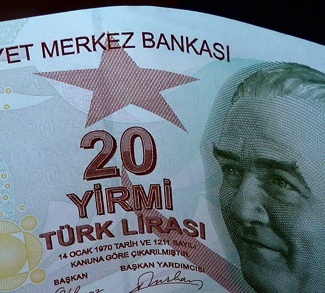The Chinese Communist Party (CCP) views the cyber domain as an emerging and ideal platform for conducting digital influence operations, and its cyber activities have become a recurring point of consternation for many international actors. Beijing has long understood the significance of using information to manipulate both foreign and domestic audiences and believes the information space is commensurate in importance to any next generation conventional military capability. In accordance with its military and political doctrine, The People’s Republic of China (PRC) utilizes cyber and disinformation campaigns to achieve outcomes favorable to its strategic-long term objectives. So much so, that it has established a theater command level organization to centralize its external information warfare operations. Indeed, China’s Strategic Support Force Network Systems Department is responsible for information warfare, with a mission set that includes psychological, electronic, and cyberwarfare. No more easily apparent is Beijing’s burgeoning cyber capabilities than in Taiwan, where it is estimated that Taipei is attacked with as many as 2,400 pieces of disinformation daily. In regard to Taiwan, the PRC continues to work towards its goal of softening the island for voluntary annexation by inducing Taiwanese voters to elect officials with a more favorable disposition toward China. While popular conceptions of imminent cross-strait conflict is predicated upon Beijing’s belief that the credible threat of force is necessary for maintaining the political conditions preventing Taiwan’s independence, as long as the CCP believes that unification can be negotiated over the long term, it appears willing to defer the use of force so long as the costs outweigh the benefits. Thus, the PRC utilizes the digital domain to facilitate its soft power maneuvering, obfuscating its formal involvement in these cross-strait activities. Chinese cyber operations directed towards Taiwan seek to divide and demoralize Taiwanese society, undermining public confidence in President Tsai, and cultivating an image of an incompetent government. Beijing actively presents a narrative that the Democratic Progressive Party (DPP) is driving Taiwan toward disaster, alluding that the future under their leadership is bleak and hopeless. Conversely, it presents a rosy narrative of the mainland and reassures those in Taiwan that China is an attractive location where business can thrive, and economic opportunity is abundant.
China’s disinformation campaign in Taiwan is facilitated via three complimentary strategies: creating original content and disseminating it throughout Taiwan’s social media platforms via fake accounts, reposting content originating from within Taiwan with the intention of popularizing and recirculating it, and using Taiwanese content farms with links to the mainland to elevate the profile of negative postings levied toward a particular person, position, or issue. In fact, studies on China’s disinformation campaigns have found links to Taiwanese traditional media. Two of Taiwan’s main media outlets hold substantial financial ties to the mainland, and one received payments to write biased articles on the cross-strait crisis. Such practices concurrently seek to reinforce preexisting divisions and opposing opinions in Taiwanese society. Since not every piece of disinformation directed towards Taipei originates from China and is instead reposted from local accounts, these activities highlight the challenge of definitive attribution against China. The vagueness and ambiguity surrounding the origins of this online information gives the impression that Beijing may be behind any or every instance of disinformation. This has two effects, first it magnifies China’s apparent influence and power, adding to the conception that Taiwan is besieged and outmatched. Second, since the CCP is not necessarily responsible for every piece of disinformation online in Taiwan, this impression can provide those who are more favorable toward engagement with China – or those who seek to blur the lines on China’s behalf so as to complicate attribution – an opportunity to publicly denounce those who think Beijing is involved as conspiracy theorists or biased against the mainland.
In regard to specific disinformation instances, Beijing has been accused of using fake social media accounts to manufacture and amplify civil discontent aimed at Taipei. Opportunistic repostings take advantage of domestic discontent or content fabrication to make stories seem deeper or more widespread than what they really are. One of the most demonstratable examples of Chinese disinformation is from summer 2017, in which a rumor traced to a PRC content farm spread on Taiwanese social media platforms. The rumor claimed that the Tsai administration sought to ban both the burning of traditional “ghost money” and incense, and the setting off of fire crackers, due to environmental concerns. This led to an estimated 10,000 people marching in Taipei against the purported ban as a violation of traditional Buddhist, Taoist, and other cultural values and set an example as to how Beijing might use the information space to impose costs on and undermine political support for its rival.
Another example of Chinese disinformation came in the wake of the Taiwan government’s long-awaited decision to finally undertake pension reforms for teachers, public employees, and the military in 2018. Chinese misinformation suggested that the cuts to benefits would be broader, affecting more people, and reducing incomes more steeply than was the case. Such perceptions yet again placed downward pressure on public confidence for the Tsai administration.
Repeated instances make it evident that CCP disinformation efforts specifically target President Tsai. When the southern city of Kaohsiung flooded in October 2018, a man posted fake claims on his Facebook page alleging Tsai visited the city on a damage assessment accompanied by soldiers with live ammunition, a comment that led to his arrest after the government assessed it had damaged Tsai’s image. Information warfare directed at undermining Tsai’s credibility serves a purpose for Beijing. Electorally, it subverts the Tsai administration and increases the likelihood of replacing the DPP with a more pro-China party. Importantly, this goal has taken precedent for the CCP. Ukrainian President Zelensky was able to grab the world’s attention and increase Ukrainian resolve, making Russia’s invasion more difficult against a strong leader with whom people can rally around. Beijing likely seeks to prevent Tsai from becoming a symbol of resistance should conflict ensue in a Taiwan contingency.
A final example of possible Chinese disinformation came when Typhoon Jebi hit Osaka, Japan and stranded thousands of tourists at Kansai International Airport. A fabricated story spread on social media alleging that Su Chii-cherng, director of the Taipei Economic and Cultural Representatives Office did nothing to help stranded Taiwanese citizens, while the PRC Consulate in Osaka dispatched buses to help rescue stranded Taiwan citizens. Shortly after the story began circulating, Su came under intense criticism online and ultimately hung himself, with the Ministry of Foreign Affairs claiming he left a suicide note blaming the disinformation surrounding his office’s incompetence. The Taiwan government found no evidence to support the rumors of Chinese assistance during the typhoon, ostensibly illustrating that this was another case of China-linked disinformation. However, in December 2019, two Taiwanese citizens were charged with creating and spreading the rumor online. Although China might have played a role in furthering the rumors spread, it still remains unclear and again highlights the challenge of definitive attribution.
In response to increased Chinese activity, Taipei and Taiwanese civil society have adopted several steps to combat disinformation and improve media literacy amongst its people. Media literacy campaigns have led to large portions of the population becoming information savvy, simplifying efforts to identify illegitimate posts by noticing language phrasing and character differences not found in Taiwan, concluding that the posts do not originate from within Taiwan. Character inconsistencies such as utilizing simplified rather than traditional characters are attributed to grammatical errors made by mainlanders emulating Taiwanese writers. The government has additionally sought to quickly identify and respond to suspected misinformation. It has increased prosecutions under existing legislation against those who spread disinformation and is contemplating expanding them further. Two notable fact-checking groups have been founded – Cofact and Taiwan FactCheck Center – to provide impartial third-party analysis for citizens independent of the government. However, further actions against Chinese disinformation have been difficult, as the issue has become politicized in Taiwan. Chinese information campaigns in Taiwan have been seen to mostly support Kuomintang candidates to the disadvantage of the DPP, making legislative solutions complicated.
Similar to Russian disinformation efforts in the United States, it is difficult to precisely identify the actual impact and effectiveness of China’s campaign on social media and more broadly its information and influence campaigns. For example, after a rise to a 71 percent approval rating in 2020, Tsai’s ratings have plummeted by 20 points and has consistently remained at just over 50 percent. China has clearly targeted president Tsai’s popularity in Taiwan, but Chinese disinformation campaigns are only one factor affecting Tsai’s approval ratings. Her detractors have legitimate concerns over her policies, such as reducing the length of military conscription and her handling of the COVID-19 pandemic. However, China’s disinformation efforts have unequivocally generated some real-life implications. The most important impact is, much like that of Russian activities, to induce those in Taiwan to question the veracity of news and political statements from public officials, lowering overall trust in the government and potentially aggravating sociopolitical divisions.
Despite sustained disinformation campaigns, empirically it is evident that Beijing’s political information warfare campaign against Taiwan has largely failed, as pro-independence sentiment actually grows every year. The CCP’s mishandling of Hong Kong and the implementation of the National Security Law was witnessed globally and presented a grim look into life under CCP rule. Beijing’s supposed goal of peaceful reunification seems increasingly unlikely. However, Beijing will continue to campaign for it as its domestic rhetoric portrays the Taiwanese as disillusioned compatriots who must be guided. It is difficult to ascertain though how long the CCP will be willing to continue “peaceful” attempts at reunification if their efforts do not yield success, and it is unknown what other actions it may take to achieve its strategic objective.




